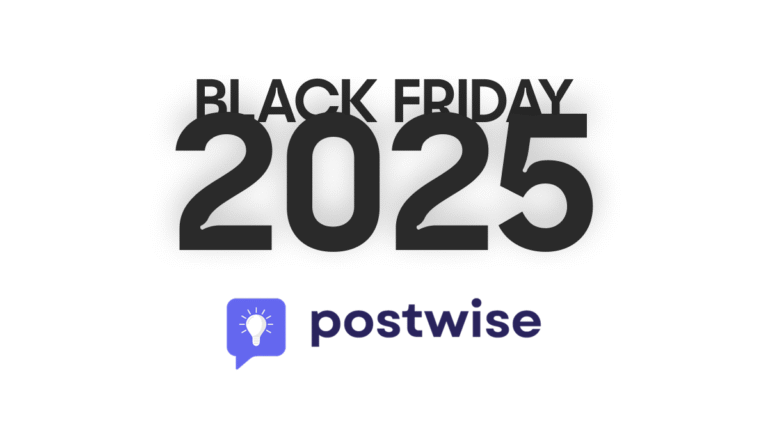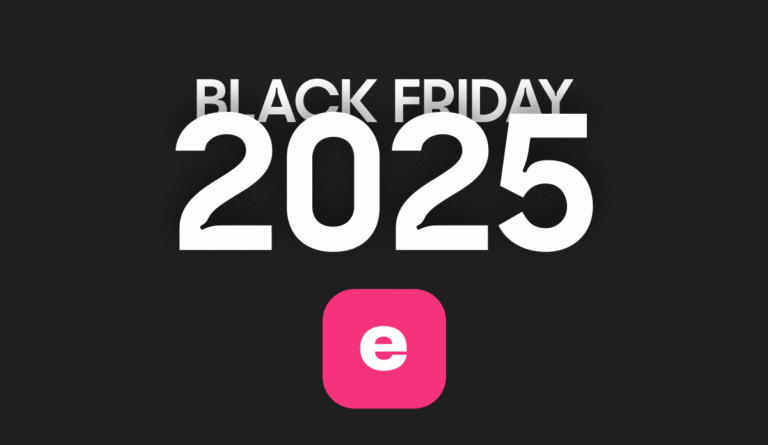At first glance, scientists and LinkedIn may not be an obvious pairing.
However, as an (aspiring) scientist, you must expand your network to find job opportunities, the latest advancements in your discipline, or potential research funding.
Building a top-notch profile on LinkedIn for scientists can help you connect with like-minded professionals who can help you foster your scientific career.
The scientific community on LinkedIn is huge, making it a potent platform to share your knowledge and expertise with thousands of professionals worldwide.
If people find your LinkedIn profile impressive, you’ll unlock a myriad of career opportunities in your field.
Here are 7 must-do steps to craft a strong LinkedIn for scientists profile.
Benefits of LinkedIn for Scientists
When you become a part of LinkedIn’s scientific network, you can:
- Find potential funding sources for your scientific research.
- Connect with your peers from your field of study and related disciplines.
- Boost readership of your published scientific works.
- Get in touch with industry key players and share important knowledge.
- Discover job opportunities in academia, corporate, or NGOs.
- Craft a digital brand that reflects your expertise and values as a scientist.
How To Build a Strong LinkedIn Profile as a Scientist
Thousands of hiring managers and academic scholars will see your LinkedIn profile.
To grab their attention, you must craft a robust profile that shows your mastery, credentials, and achievements in your discipline.
You must also post educational content about your field, send DMs to people you want to work with, and interact with other members’ posts.
1. Keep an Updated Profile
Every scientist’s bread and butter is their specialized knowledge and expertise.
So when you create your LinkedIn profile, you must ensure that it brands you as a specialist with high proficiency in your field of study.
For instance, if you’re a postdoctoral researcher in microbiology, you must showcase your academic credentials, industry experiences, or published papers in the field.
In short, you must substantiate your claim that you’re an expert. Here are some tips to do that:
- Use a high-resolution profile photo. It must be professionally-looking, so wear formal clothing. The ideal image size is 400 pixels by 400 pixels.
- Upload a banner image that reflects your scientific expertise. For example, if you’re a chemist, you can attach a photo of you working in a laboratory. If you’re a data scientist, you can use a collage of your codes, graphs, or datasets.
- Write an impressive headline that briefly states who you are. Use this to specify what type of scientist you are as well as what services you can offer. You can also use this line to inform your readers of your current academic status (e.g., PhD candidate, postdoctoral researcher, MS graduate, etc.)
If you’re struggling to write a compelling headline, you can use Taplio’s headline generator to assist you.
Examples: “Field Biologist and Natural History Researcher”
“Physicist and researcher from National Aeronautics Space Administration”
“PhD Candidate in Chemistry at Syracuse University”
- Use keywords in your “About” Section. This section aims to elaborate on your current profession, projects, and achievements in the scientific community. By adding keywords in this section, you can improve your visibility to people who need an expert in your discipline.
- Complete your profile’s “Education” section. Some people gauge a scientist’s credibility by his education, so ensure to provide your complete educational history.
- List your Professional Experiences. Under the “Experience” section, write every academic or corporate work you had. Add 1–2 sentences to explain what you did for each entry.
- Add your published works under the “Publications” section. Your published studies will serve as proof of your contributions to your discipline’s literature.
- Ask for recommendations from your previous colleagues. People vouching for your knowledge and skills will surely boost your reputation as a scholar.

2. Post Niche-Focused Content
Posting educational content is one way to showcase your scientific proficiency.
If people can gain valuable insights and new information from you, it establishes you as a competent professional in your discipline.
Since your target audience consists of people in your field, your topics should center around your area of expertise.
For instance, if you’re an astrophysicist, it’s natural for you to write on any physics-related topic (as long as you’re knowledgeable about it).
However, it’s still best to focus mostly on astrophysics rather than fluid mechanics or acoustics.
Here are more tips to make your posts more professionally looking and informative:
- Your post must be concise, readable, and grammatically flawless.
- Cite your sources if you’ll use information or data from other published works.
- Try to laymanize some technical words in your posts.
You can also post content that can help scientists in general, like tips to overcome fatigue in research, career success stories, laboratory safety measures, and more.
3. Build a Regular Posting Schedule
It’s important to maintain your followers’ interest in your profile. This is to ensure that your brand remains memorable, prompting them to approach you when they need your expertise.
Posting two to three well-researched content per week is advisable. Avoid overpublishing content, as it may compromise the quality of your writing.
Also, note that not every time is a good time to post. Audience engagement fluctuates at certain days or hours, so you must be observant to identify when engagement is at its peak and take advantage of those times. Taplio’s post scheduler allows you to automatically queue your posts for those optimal times to ensure maximum post engagement.

4. Like, Share, and Comment
You must also interact with other scientists and professionals on LinkedIn to gain new connections for potential career opportunities. You can like, share, or comment on other members’ posts to gain exposure in the scientific community and expand your network.

5. Use Direct Messages
One way to generate leads on LinkedIn is by sending personalized DMs. By writing DMs, you can express your intent to connect with your recipients and offer your professional services.
If you want your recipient to be part of your network, you can send them DMs that:
- Congratulate them on their latest achievements.
- Provide information or insights on your field of knowledge.
- Give tips and suggestions for their current scientific endeavors.
- Answer their questions or clarify some concepts to them.
Meanwhile, if your intent is to offer services to a prospective client, you must elaborate on how your knowledge can help their business or organization. You can also ask them for referrals in your field for employment opportunities.
People who are interested in your content are most likely to respond to your DMs. So, you must prioritize them when writing DMs. Usually, these are the professionals who liked, reposted, or commented on your posts. Taplio’s CRM feature automatically generates lists of your likers and commenters so you can send them personalized DMs right away.

6. Transform Texts Into Visuals
We all know that writing in-depth educational content is scientists’ bread and butter on LinkedIn. However, even if your posts are the most comprehensive content in your niche, no one will bother reading them if they’re just a boring wall of text.
Using visuals with your write-ups can make your content more engaging and digestible. With visuals, you can compress the information you want to convey into an eye-catching image or video that is easier to comprehend.

Here are some examples of effectively used visuals:
- Using illustrations or infographics to explain scientific concepts or processes.
- Using flowcharts to show an experiment’s methodology or conceptual framework.
- Using diagrams to compare and contrast experimental variables.
- Using charts or graphs to show numerical data.
7. Utilize Lead Magnets and LinkedIn Ads
Aside from attracting followers, scientists aiming to leverage LinkedIn must also focus on maximizing lead generation. These leads are people who are fascinated by not only your content but also your potential source of employment opportunities, freelance work, or research funding.
LinkedIn Ads are always useful for lead generation, but nothing beats those freebie lead magnets. You can offer valuable free stuff to your prospects, such as free eBooks, newsletters, webinars, and video tutorials, in exchange for their contact info so you can reach out to them in the future.
11 Scientists You Should Be Following on LinkedIn
Our 7-step guide to a strong LinkedIn for scientists profile will surely boost your online visibility, engagements, and lead generation. But if you’re still struggling to build an impeccable profile, you can refer to these top LinkedIn scientist profiles:
1. Fernando Mateos-Gonzales

Fernando Mateos-Gonzales is a field biologist and expedition leader who performs research on animal behavior and climate change using quantitative data.
2. Ian Paddick

Ian Paddick is currently a consultant medical physicist in the United Kingdom. He was also a Chief Physicist at the National Hospital for Neurology and Neurosurgery in London.
3. Sagnik Chakraborty

Sagnik Chakraborty is a physicist and science communicator from West Bengal, India. He has a knack for Python applications in machine learning as well as artificial intelligence.
4. Christina Arapatzi

Christina Arapatzi is a molecular biology scientist focused on innovative cancer research. She’s currently a molecular biologist at BIOEMTECH, a research firm based in Greece.
5. Anderly C. Chüeh

Anderly Chüeh is a reputable cancer biologist with lots of published works in well-recognized international human genetics and cancer research journals.
6. Matthew McCleskey

Matthew McCleskey is a nuclear physicist specializing in oil well logging and Monte Carlo modeling of radiation transport.
7. William Hatheway

William Hatheway is a freelance meteorologist specializing in Wet Bulb Globe Temperature, weather app development, and weather instrumentation.
8. Trevor Valle

Trevor Valle is a field paleontologist, fossil mitigation field technician, and museum educator. He is regarded as a highly-skilled fieldwork researcher in the field of paleontology.
9. Katie Gallagher

Katie is a senior botanist with over 15 years of professional experience in the field. She’s currently working at H.T. Harvey & Associates as a full-time botanist.
10. Dan Kottlowski

Dan Kottlowski is a senior meteorologist with over 45 years of working experience with AccuWeather. He also published many papers on forecasting development challenges associated with atmospheric disturbances.
11. David Eagleman

David Eagleman is a top American neuroscientist, Stanford professor and author. He’s also the founder and CEO of Neosensory, Inc which creates technology that can interact with the brain without requiring surgical implantation of devices. David has 14,000 followers on LinkedIn.





